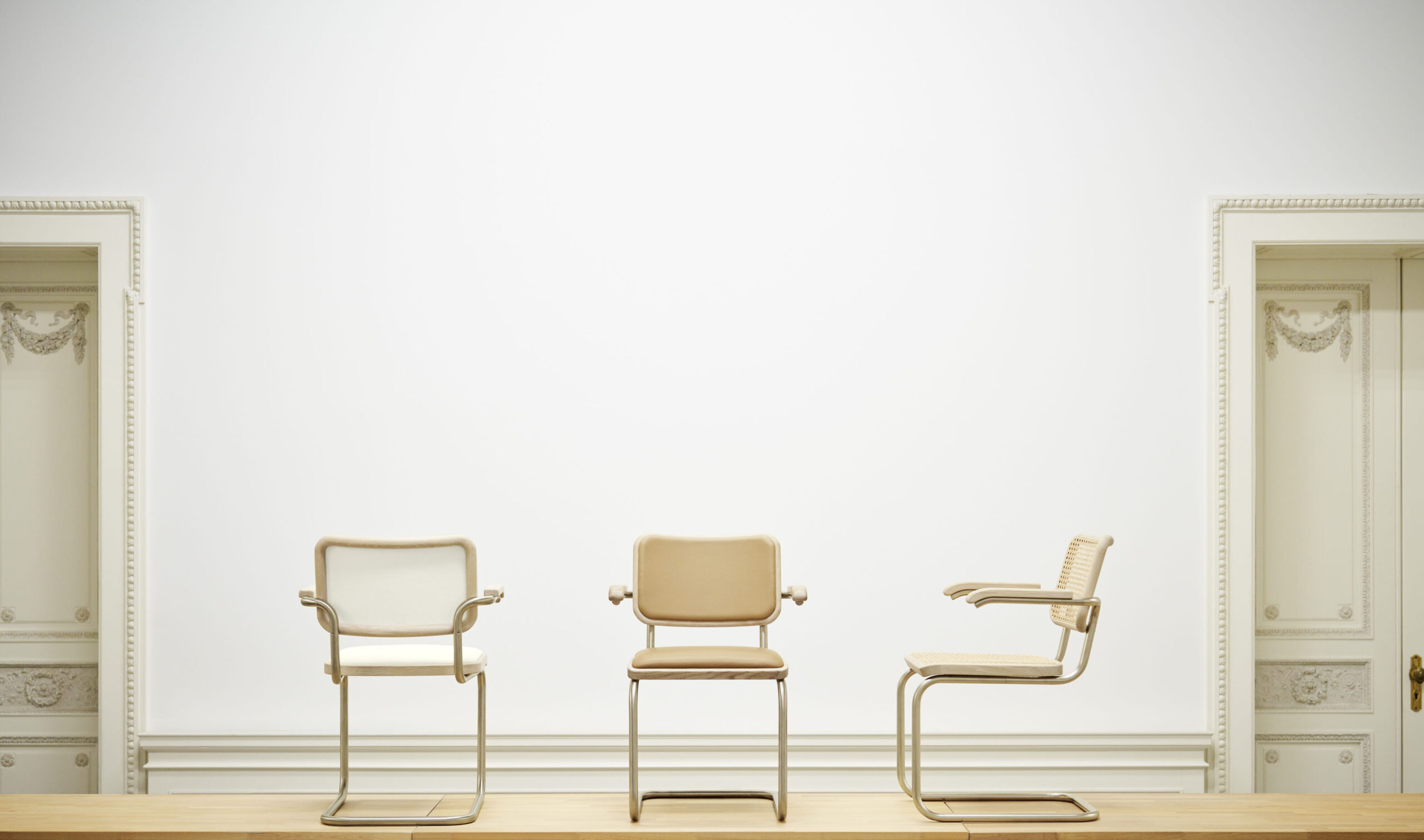 Creating transparency was at the heart of the brief (hence all the glass)|RSP Architects’ vision for a mix of pod offices, open workstations and the all-important blank spaces between|Close encounter: meeting rooms look like space-craft beamed to earth|Big reveal: smart glass in the meeting rooms can turn the walls from opaque to transparent, creating vistas|Fluorescent tubes, suspended randomly, enhance the free-form look|Circular closed offices and open workstations are interspersed|Eastern thinking equates blank spaces, like these created behind curved rooms, with imagination and possibility|A central core houses more menial areas, such as for storage and printing||
Creating transparency was at the heart of the brief (hence all the glass)|RSP Architects’ vision for a mix of pod offices, open workstations and the all-important blank spaces between|Close encounter: meeting rooms look like space-craft beamed to earth|Big reveal: smart glass in the meeting rooms can turn the walls from opaque to transparent, creating vistas|Fluorescent tubes, suspended randomly, enhance the free-form look|Circular closed offices and open workstations are interspersed|Eastern thinking equates blank spaces, like these created behind curved rooms, with imagination and possibility|A central core houses more menial areas, such as for storage and printing||
I’ve seen the future. It’s beautiful, it’s white and it’s located in the central business district of Beijing. If sci-fi producers ever set a TV show in an office, far, far away, then they could do a lot worse than using this workplace as a set. Maru Maru office, as it is known, is the work of RSP Architects, and the home of White Peak, a Scandinavian real estate investment firm based in China. RSP was brought on board after the initial layout that the contractor came up with – a fairly standard, functional affair by all accounts – was not quite what the Swedish client had in mind. The space is in a new compound, together with the Park Hyatt hotel, and with a view that includes OMA’s China Central Television (CCTV) HQ: Rem Koolhaas and Ole Scheeren’s huge building takes the form of two massive leaning towers, connected at the top and bottom to form one continuous, hulking loop.
This dramatic vista provided the first inspiration for RSP’s senior architect Clarence Chia Tien San: “When I first saw the site, I thought it was quite an exciting location,” he says. The offices are at a busy intersection in a central part of the Chinese capital, with the CCTV building providing an interesting landmark to the northeast, and there is also a more perfunctory element, a main highway running in an easterly direction. “I thought it would be nice to capture this unique and dynamic urban scenery into the workspace,” he continues, “so the first idea in response to the brief was transparency. The city forms the background for the reception, for the meeting rooms and for the offices.”
The space has therefore been designed with layers of transparency in mind. The first layer that visitors encounter is the reception. Here, modifications were made to the existing structure: a false ceiling was removed and instead the exposed features were painted black and covered with dark mirrored louvres to add a real sense of theatre.
The second layer is the ring of meeting rooms that run around the office. Here RSP deviates from its otherwise monochrome colour palette, with woven vinyl carpet in purple and grey that provides a tonal contrast to the interior in this part of the scheme. The open-plan office area is lit up by groups of fluorescent tubes, which are suspended at a fixed level, but in a random layout so that they act as a foil to the rigid ceiling grid. RSP also removed the raised floor system and replaced it with a white epoxy floor, which really gives the workplace that spacecraft-like feel. The closed, cellular offices occupied by the managers are designed to look like small pods, continuing the outer-space aesthetic. The pods have two glass facades: the one that faces the rows of desks is acid etched, while the one that faces the outside world is transparent. The final layer is an exhibition space, dedicated to showcasing the firm’s real estate portfolio.
Glazing is a key feature of the specification of this workspace. For the meeting rooms, smart electric glass is used, which can turn opaque to create privacy when required; when confidentiality isn’t paramount and the glass remains clear, an impressive vista is created through the meeting rooms to the exhibition area from the reception.
It means that everything is on show as and when required, for client visits or presentations, for example. White Peak also specifically asked for an exclusive meeting room, where it can host Chinese high officials. In order to utilise space efficiently, amenities such as the open plan library, the storage below, the printing areas and the kitchen are clustered around the core of the floor, freeing up the space at the building’s periphery.
Ease of communication is paramount across the floor, which is why the circular closed rooms and the rows of workstations are interspersed with each other, so the 20 or so managers and staff can interact relatively free of boundaries. “Removing the hierarchy was not important, although I didn’t want to be defeated by a system whereby all the light, air and views are traditionally given to higher-level managers,” says Chia Tien San, “but giving every member of staff access to these features was important, though.” To this end, the CCTV building is visible to all, instead of just a select band of executives.
The design philosophy at work here owes much to the architect’s Japanese upbringing. Crucial to the spatial planning is the idea of guchi (opening) where resources such as light and air enter through mado (windows): in other words, no employee should find themselves stuck in a spot without access to natural daylight. The windows are framed in brown on an otherwise white wall surface. The idea of yohaku (blankness) was also very important to the aesthetic, as Chia Tien San explains. “The absence of yohaku might commonly be equated with a lack of function, but in eastern thinking it is considered as the rich presence of imagination and possibilities.” What this means in layman’s terms is that there are curved corner rooms within the space, but the gaps behind them are left blank – no cushy, completely cut-off directors’ offices in the far corners of this office. The furniture in these rooms is all tailor made, which entailed the furniture maker going down to the site to measure every single room. The architects also specified carpets here to make the rooms look more like islands. While some might consider yohaku a waste of space, in some ways it’s actually kind of refreshing. Why not leave a little room for contemplation instead of having to justify every single square inch of a workspace? As Chia Tien San concludes: “Sharing was the main concept. This idea of blank space – which was actually the area of study I chose for my thesis back in Japan – helps to change the relationship between the spaces.” Blank space considered a design feature instead of cramming ’em in to within a millimetre of a health and safety dictat? Maybe we’ve just glimpsed the utopian future of the workplace.






















